John Janaro's Blog, page 64
December 10, 2022
Advent With Christina Grimmie
 It’s December 10, 2022—and I am remembering Christina Grimmie after six-and-a-half years. It’s hard to believe so much time has passed. Three of my “kids” are now older than Christina was on the final day of her earthly life. But her music has remained as one of many ways in which she is a bright light in these days of preparation for Christmas, and in the joy of the Christmas season. I wrote about her YouTube Christmas music five years ago on this blog (HERE) and I still love these songs, although one of the internal links is no longer active on that post. Since then, compilations of her Christmas material have been posted on YouTube.
It’s December 10, 2022—and I am remembering Christina Grimmie after six-and-a-half years. It’s hard to believe so much time has passed. Three of my “kids” are now older than Christina was on the final day of her earthly life. But her music has remained as one of many ways in which she is a bright light in these days of preparation for Christmas, and in the joy of the Christmas season. I wrote about her YouTube Christmas music five years ago on this blog (HERE) and I still love these songs, although one of the internal links is no longer active on that post. Since then, compilations of her Christmas material have been posted on YouTube.Christina’s life reached its fulfillment while she was still young (and, by any measure, it was an unusually full and joyful life). But our time-in-this-world continues to move and change; we continue to journey, following the “signs” of our days, months, years (for some of us, many years) and longing to find where they are leading. The road passes through obscure places, but there are also lights, like stars in the night sky, that guide us along the way, and remind us that what we seek—what we are awaiting—is not a fantasy of our own making, but the fulfillment of a promise.
We especially need lights to break through the long nights of this Advent 2022. So often, violence seems to be putting an end to fragile human aspirations, smashing them, extinguishing them, suffocating them. We need to remember that our hope is in the One who came to dwell with those who suffer violence—the One whose Love is greater than all the powers of this world.
Christina Grimmie’s 2014 rendition of “O Come, O Come Emmanuel” helps us to remember. Watch and listen as her inimitable voice brings a touch of “soul” to to this traditional Advent hymn:
December 9, 2022
Juan Diego: A Simple, “Ordinary” Man…
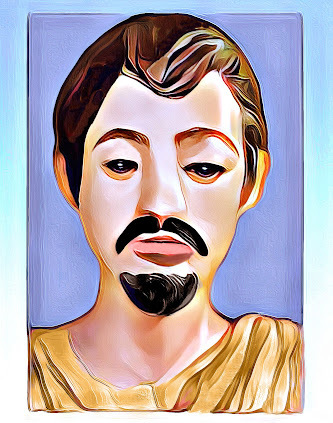 Today is the feast day of Saint Juan Diego Cuauhtlatoatzin. You may have missed it, because it ranks as "only" an optional memorial.
Today is the feast day of Saint Juan Diego Cuauhtlatoatzin. You may have missed it, because it ranks as "only" an optional memorial.Who is Juan Diego? Even now, he is largely hidden from us.
He was always loved by the simple people who came for centuries to the church on a hill in Mexico City to see his wondrous cloak. But not much was said about him in the past. Some tried to deny that he ever existed, though most didn't go that far. After all, we had his cloak.
When I was young and Catholic in the United States, he was just "the guy" in the story of the amazing and scientifically inexplicable image of Our Lady of Guadalupe. Wow, the incredible tilma and its image! There were the studies, the cactus fibers, the miraculous preservation of the cloth, the mysterious colors, the eyes, etc. And millions of conversions, of course. (All of these things are fascinating and important, I hasten to add.)
But who was Juan Diego?
I must say, it never seemed to matter much.
I can recall that it flashed through my mind: "Just 'plain' Juan Diego? These Marian visionaries are usually saints or at least blessed, but he's 'just plain Juan Diego.' Seems odd. Wonder why."
But I didn't give it much thought. Nor did I think too much about this particular way that Mary had chosen to be present as a merciful, loving mother for me in my own history, on my own continent.
Only later did I begin to learn that the Virgin of Guadalupe is an enduring and vital presence at the center of the American continent, and indeed a profoundly personal presence for me, just as she wishes to be for every person who visits her in that place.
As with so many other things, the man who taught me to love Our Lady of Guadalupe was the man who taught me to love Jesus Christ, to love the human person, to love my own life. Saint John Paul II made five pilgrimages to the Basilica of Our Lady of Guadalupe during his pontificate. He brought to her a love that convinced me there was a person there, not just a remarkable artifact.
The tilma is Mary's way of "using media" to be present to her children.
But you see, whenever I try to talk about Saint Juan Diego Cuauhtlatoatzin, even now, it seems natural to pass him by and go right to Mary.
I don't think he has a problem with that.
Here is a "saint" who is so humble that his identity is almost entirely transparent to the Mother of God. It is true, he is a patron of indigenous peoples of America, as well as all lay persons. He is an exemplar of the “ordinary person” in the Church who is called to the persistent and joyful labor of evangelization.
Juan Diego was just a poor man who encountered the beauty of Jesus living in Mary, and followed. He gave himself over to a humble place in a great and mysterious story. And he remains standing behind the Merciful Mother, giving her a place where she can give Jesus to us.
I pray to him every day. I am convinced that he is one of the greatest saints of the Church. He stands forever in a humble relationship to Mary, her "dearest and smallest son" and in this way so much like Jesus.
John Paul II brought Juan Diego out from behind the tilma. I was there in the plaza of the basilica twenty years ago—on July 31, 2002—along with millions of pilgrims throughout the city. And I was convinced that I was watching a saint canonizing another saint.
Saint John Paul II was suffering so much at that time, it was painful to look at him even from a distance. But on that day, there was something luminous about him. I can only describe it by recalling my impression at that time; I saw John Paul as though he were pierced with the form of the Cross on his whole body. And yet, he moved—almost miraculously—for it was Crucified Love that carried him.
John Paul II came to Mexico because he loved Our Lady of Guadalupe and he loved "America"—which for him was one great continent—and he loved the "Ecclesia in America."
It was love that transfigured him in those moments on that day. And I thought to myself, "This is what it must have been like to see Saint Francis of Assisi." This was the impression that came to me, spontaneously, as I watched this magnificent, wounded, broken lover of Christ, the man who was the outstanding witness to the Gospel in my lifetime: Saint John Paul II.
He left an unforgettable mark on the Church in America during that journey. Many remember it primarily as the occasion of his last international World Youth Day celebration, held in Toronto. But Toronto came after the pilgrimage to Mexico to be with Mary and to honor the one she called "Juanito."
It strikes me that poor Saint Juan Diego was "overshadowed"—even at his own canonization—by the stupendous presence of the great Saint John Paul II. But once again, I don't think that the humble Saint Juan Diego Cuauhtlatoatzin had any complaints about that.
These two great saints, and our Merciful Mother, help to sustain in me a “supernaturally realistic” hope for the future of “America,” the future of all the peoples who share this common land.————————————————————
I worked up a couple of Juan Diego Digital Art pieces today at JJStudios. In both the portrait above and the “tilma scene” below, I began with photographs of small statues, replaced the backgrounds, and used a variety of virtual tools (including those that allow me to “work by hand”) to shape and “sculpt” these digital images..

December 8, 2022
Immaculata
December 7, 2022
Saint Ambrose: A Roman Governor Becomes a Bishop
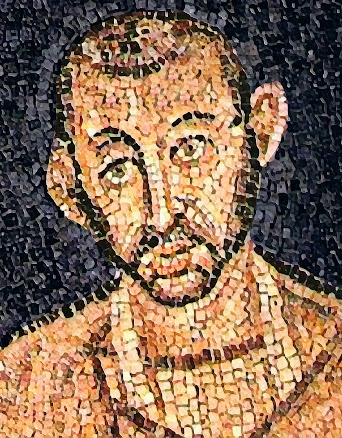 Today is the feast of Saint Ambrose, and his story really is a great conversion story. Here is the text that appeared in my column in the February 2019 issue of Magnificat:
Today is the feast of Saint Ambrose, and his story really is a great conversion story. Here is the text that appeared in my column in the February 2019 issue of Magnificat:In the fourth century, Roman society was in a difficult transition from a thousand years of paganism (that had shaped its laws and modes of governance) to the newly “official” Christianity of Emperor Constantine and his successors. Many Romans in powerful positions became merely nominal Christians, and some even tried to manipulate the Church. Others were sincerely convinced of the truth of the Gospel, but saw difficulties in reconciling that conviction with their political position in the society of late antiquity.
Aurelius Ambrosius was one of the latter people. He was born in Trier in Gaul (where his father was Imperial Prefect) around 340, into a family of Roman nobility that also had a Christian lineage. He was given a thorough education in preparation for a political career. Though enrolled as a catechumen, he was not baptized in his youth. Wealthy Christian families in Rome generally delayed the baptism of their children, and men committed to government service often remained catechumens indefinitely, as exercising worldly power seemed incompatible with the demands of Christian living.
Ambrose rose to become Governor of Milan. Although he knew the basics of Christianity, tried to live an upright life, and was known and respected for his fairness and equanimity, Governor Ambrose was not ready for baptism even as he approached middle age. As far as he could see, his office required him to belong to what was still a pre-Christian world and to use the sometimes brutal means of that world when necessary.
Still, he had no taste for violent measures. Ambrose preferred persuasion, and he excelled at it. During his governorship, the affairs of the Church in Milan were in an uproar as the upholders of Nicene orthodoxy battled against the Arian party. After the (Arian supporting) bishop died in 374, partisans of both sides nearly rioted over who would succeed him. Governor Ambrose was compelled to intervene to restore the peace. Instead of calling in soldiers, however, he spoke to the people of Milan about the necessity of concord.
Here God’s grace was mysteriously at work. Even as the governor’s words brought the people together, the Holy Spirit inspired within them an unusual but prophetic intuition and desire: that Governor Ambrose himself should become their new bishop. They took up the cry, “Ambrose for bishop!” This was not, however, what the still-unbaptized Emperor’s consul had expected. He resisted what was ultimately a call for his own conversion. In the days that followed, he tried to convince the people that he unworthy of being a bishop. He was a civil official who had used torture and shed blood. He was weighed down with worldly riches. He was bound to the Emperor’s service. When the people continued to insist, Ambrose fled the city and went into hiding. But they sent an appeal to the Emperor himself and received his approval.
Only then did Ambrose lay down the burden of his worldly office. The call of Jesus Christ surrounded him from every side, and he realized that it was time to say, “Yes.” He was baptized on November 30, 374 and was ordained bishop a week later, on December 7. He put aside Imperial power to become a shepherd, and thereafter he dedicated all his intelligence, eloquence, and judiciousness to preaching Christ and serving His Church.
December 6, 2022
Happy 20th Birthday, Teresa!
Twenty years really is a “generation,” a segment of time that history is made of.


December 4, 2022
“The Earth Shall be Filled with Knowledge of the Lord…”
December 3, 2022
Gazing Upon China With Saint Francis Xavier
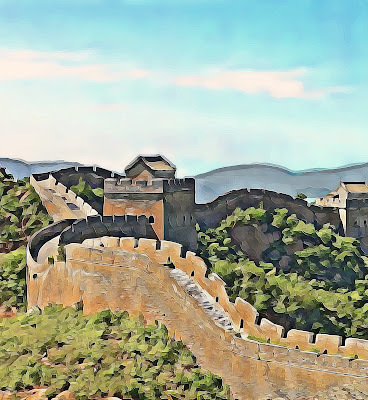 On this December 3rd, I can’t improve much on the summary I made last year of the life of the incredible Saint Francis Xavier, missionary to East Asia. He was no seeker of earthly power or riches; he was a man on fire with the love of God, with a passion to witness to Jesus through all the world. He preached in India, was the first Catholic missionary in Japan, and longed to reach China—where he finally died of an illness (having reached the limits of human endurance) on an island seven miles from the coast of the southern province of Guangdong. The ardor of his missionary heart brought a great many people to Christ, shined the light of the Gospel explicitly in nations where it had never shone before, and planted seeds—many of which have yet to grow, blossom, and bear fruit. But others have grown and bloomed, and many more grow secretly.
On this December 3rd, I can’t improve much on the summary I made last year of the life of the incredible Saint Francis Xavier, missionary to East Asia. He was no seeker of earthly power or riches; he was a man on fire with the love of God, with a passion to witness to Jesus through all the world. He preached in India, was the first Catholic missionary in Japan, and longed to reach China—where he finally died of an illness (having reached the limits of human endurance) on an island seven miles from the coast of the southern province of Guangdong. The ardor of his missionary heart brought a great many people to Christ, shined the light of the Gospel explicitly in nations where it had never shone before, and planted seeds—many of which have yet to grow, blossom, and bear fruit. But others have grown and bloomed, and many more grow secretly.Those seeds planted by Francis Xavier and those who followed after him (indeed, also those who preceded him) have already borne worthy fruit. His Jesuit brethren reached China, and they learned to propose the Gospel in all its radical newness, but also as the fulfillment of China’s profound “religious” wisdom traditions, its reverent humanism, and its ancient yet childlike wonder in front of the order, harmony, and beauty of the world. Along with other missionaries, the Jesuits came with respect for China’s great culture, and they fostered with patience its encounter with Jesus.
Their witness made possible the conversions of a number of the elite class in the late-Ming Dynasty period (early-to-mid 17th century) including Li Zhizao, Yang Tingyun, and Xu Guangqi—who are known as the “three pillars” of the Catholic Church in China. In the subsequent centuries, Christianity’s growth in China was small but significant. It faced persecution at various times, while also spreading more widely (sometimes in ambiguous forms) after the British forcibly “opened” China to Western “trade” in the 19th century. There was much that was shameful in those days, when British companies traded vast quantities of Indian opium for Chinese tea, initiating and sustaining a widespread opium addiction that was previously unknown to China.
Though never colonized, China suffered greatly under the weight of Western political and economic powers. Meanwhile, Protestant and Catholic missionaries came in large numbers, but it could be difficult to distinguish the Gospel from a huge influx of other European ideas. Many of these ideas from the West were good, but they often reached the declining Chinese society at the end of the Qing Dynasty (turn of the 20th century) in a “mixed bag” of European ideas and practices already distorted by Europe’s dominant mentality, which was characterized by a post-Christian, materialistic, technologically manipulative hubris.
The 20th century was a period of unprecedented upheaval and astonishing change for the whole world, but it all came with peculiar intensiveness to China, the world’s most populated country. The Church grew, and there were many genuine advances rooted in an increasingly worldwide recognition of the dignity of human persons. But along with these came wars and destructive ideologies, especially what might be called the “ultimate Christian heresy,” Marxism-Leninism, which endeavored to spend every resource of human idealism, intelligence, and hope on the violent and futile effort to break the world and then refashion it as an egalitarian utopia. Under Mao Zedong, China became a strange and tormented laboratory for all manner of experimentation with human and natural ecology in disastrous attempts to create the New Communist Human Being.
After Mao’s death in 1976, China’s Communist Party apparently “pivoted.” It exchanged its exhausted and discredited utopian materialism for a more pragmatic consumerist materialism, but it still maintained its power and its willingness to crush without mercy any deviation from its all-invasive dictatorial grasp. China is ruled today by a vast militarized and bureaucratized neo-Fascist PartyState that is accountable to no one and keeps many secrets. They permit their power to be constrained, it seems, only to the degree necessary to maintain a minimum of credibility on the “world stage,” to do business and expand their influence in globalized markets (which is unavoidable in today’s world), to make a show (a rather poor show) of humanitarian and ecological concerns, and to make treaties and diplomatic and trade agreements with other countries.
But surely there is more to the story of today’s China. Impulses toward the good run abundantly through the veins of this enormous nation. There is much constructive work, dedication in good faith to caring for people, genuine love and self-sacrifice, preservation or rediscovery of the best of a four-thousand-year-old tradition, and genuine new questions in the face of present circumstances. I know, too, that there has been immense suffering, patience, quiet dignity, moments of surprising heroism, and the pervasive cry of a billion-and-a-half hearts that are not satisfied by the Party Line or increasing profits or the combination of both that Chinese Communofacism currently offers as its ideal for happiness.
I know that it is the Lord of Heaven who truly permits and sustains and governs all things, the Lord who has drawn close to every human heart in Jesus Christ.
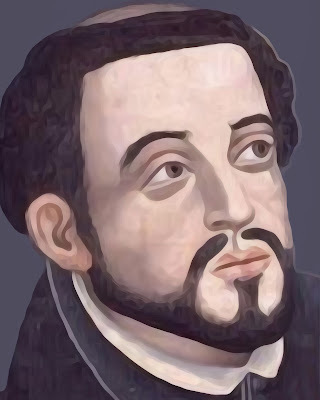 For this reason (and, ultimately, what other reason is there?) I continue to have hope for China, and for Chinese people, in the present and in times to come. It has been more than five years since I took up in earnest the study of China and other East Asian cultures—a project I began when I realized how little I knew about this immense part of the world. After five years of continuous application to study and some written work of my own, I find myself with more questions than when I began. Perhaps they are at least more intelligent questions.
For this reason (and, ultimately, what other reason is there?) I continue to have hope for China, and for Chinese people, in the present and in times to come. It has been more than five years since I took up in earnest the study of China and other East Asian cultures—a project I began when I realized how little I knew about this immense part of the world. After five years of continuous application to study and some written work of my own, I find myself with more questions than when I began. Perhaps they are at least more intelligent questions.Saint Francis Xavier, however, did not arrive at the threshold of China in the 16th century because he merely had “questions.” He was driven by the love of Christ, and by love for these millions of people with whom he wanted to share the surpassing joy of knowing Christ. He was certain that Christ was the reason why each one of them had been made. Though I have a weak faith and a fickle heart, I have the same certainty that Francis Xavier had. I hope that my own labors can participate somehow in the mission he sought to carry out.
I will probably never “cross the border” into China, but as I study its history and learn about its people, I glimpse their beautiful and special qualities, their historic and current problems, their particular (and terrible) sufferings, and—once again, with amazement—the fundamental common humanity we share and the common destiny toward which we journey together. I hope to carry them in my heart, offering them to the infinite mercy of Jesus who loves us all. I will continue to study hard and write more, to learn what I can and ask questions, to encourage further dialogue and understanding between West and East, and to contribute to engaging problems and even facing dangers down the road—all in the hope of drawing closer together in Christ and sharing together the joy of eternal life.
December 2, 2022
“We Need a Life that Raises Us From the Dead”
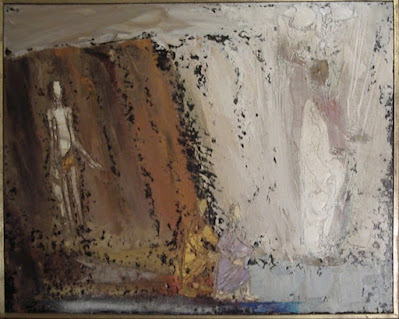 I want to share excerpts from the text we have been working on. It helps me to be reminded of the truth every day by listening to words like these, by being challenged and encouraged by the reality they signify:
I want to share excerpts from the text we have been working on. It helps me to be reminded of the truth every day by listening to words like these, by being challenged and encouraged by the reality they signify:" ‘I am the resurrection and the life; whoever believes in me, even if he dies, will live, and everyone who lives and believes in me will never die’ [John 11:25]. This, only this, is what we need, what everyone needs. This is the only thing necessary. We need a life that raises us from the dead, from every death, from every face that death and evil take on in our personal life, family, community, and the entire world. All the rest is a thousand things that worry us and make us anxious without being necessary, because they never respond to the true need of the heart, of every heart."
" ‘If Christ is enough, what is all the rest? Hunger, desire, work, politics, passion, sentiments, [concerns about] war: What are all these things?’ [this was a question many people asked]. All of this is longing for Christ, all of this is the concrete face of a cry, of the need for Him, the thirst for Him, the emptiness in life if He is not there. So, in embracing Christ I am not renouncing all of these things; I am not saying that all of this is nothing. I am affirming even more that all of this truly wants to be full of reality. If I do not embrace Christ, if I do not let Christ enter my house, my house remains empty as a home, and nothing has meaning any more, not the table, not the chair, nothing. Acknowledging that all of this is reaching out to Him makes every instant of our daily life the place of the verification of His presence, that He is present."
—Abbot Mauro-Giuseppe Lepori
December 1, 2022
Saint Charles de Foucauld, the “Universal” Brother
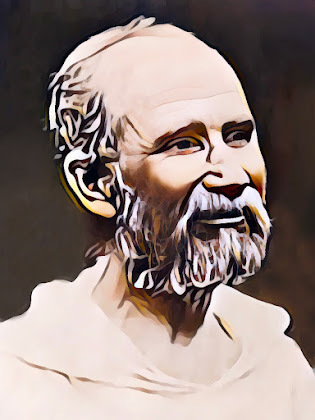 For the first time, we mark December 1 as the commemoration of
Saint
Charles de Foucauld.
For the first time, we mark December 1 as the commemoration of
Saint
Charles de Foucauld. His words below, excerpted from his letters, are expressed in the ardent language of late-nineteenth/early-twentieth-century French Catholic spirituality (a language, we should note, that sustained missionaries who courageously preached the gospel all over the earth). At the same time, the words of Saint Charles—the little brother of Jesus, the “universal brother”—express a heart drawn by Jesus far beyond the limits of any particular culture, a heart opened and wounded by the love of Jesus for all humanity, and sent into the desert to seek out the poorest and most forgotten of his brothers, to share their humble lives, to be radically available to them, to suffer with them and in solitude, to die alone and—apparently—forgotten deep in the Sahara on December 1, 1916.
“Pray very much: when we love we want to talk endlessly to the being we love, or at least look at him endlessly: this is what prayer is, familiar converse with our Beloved: we look at him, we tell him we love him, we rejoice at being at his feet, we tell him that this is where we want to live and die.
“What would we speak of if not of him who is our life, for whom we breathe, for whom alone we want to live, to whom we belong unreservedly and for ever, body, soul, mind and heart, all to him, all for him!
“And how divinely good he is to allow ants like us to love him. One look from him would be too much for us: him, infinitude, sovereign and infinite perfection! …us, such tiny, ungrateful, sinful creatures.
“But not only does he look at us, he makes himself one of us; he 'takes delight in being with the children of men'; he watches over us and leads us in all our ways; he makes himself the least among us, suffers with us, for us and on behalf of us for thirty-three years, and dies through us and for us, bathing us and sanctifying all of us with his divine blood. How happy we are!”
November 30, 2022
The Joy and the Mission of Saint Andrew
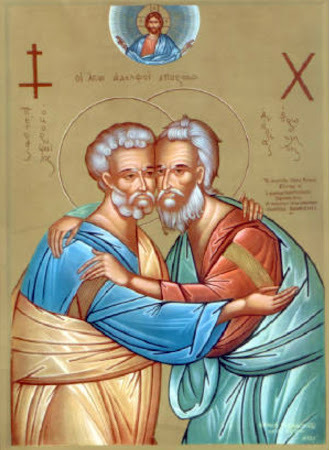 Happy feast of Saint Andrew the Apostle, "the First-Called,” who is greatly venerated in the East, especially by the see of Constantinople, which traces its origin to him. Also, according to the annals of Kyivan-Rus, Andrew was the first to preach the gospel to the “Scythians” in the land of present day Ukraine.
Happy feast of Saint Andrew the Apostle, "the First-Called,” who is greatly venerated in the East, especially by the see of Constantinople, which traces its origin to him. Also, according to the annals of Kyivan-Rus, Andrew was the first to preach the gospel to the “Scythians” in the land of present day Ukraine.Saint Andrew was Saint Peter's brother, and undoubtedly “unity between the brothers” is his particular concern. Let us therefore join with Pope Francis and Patriarch Bartholomew I and pray for unity, on this special day for churches West and East, Latin Catholic, Byzantine Catholic, and Orthodox.
This is the Kontakion for the day in the Byzantine Liturgy: "Let us praise for his courage Andrew the Theologian, first Apostle of the Savior and brother of Peter, for in like manner as he drew his brother to Christ, he is crying out to us: 'Come, for we have found the One the world desires!'"In the prayer, Saint Andrew calls Jesus "the One the world desires." We have been created for Him. Our hearts are made for Him. The meaning and mysterious reality of the very impetus of life—desire—finds its fulfillment in Him.
What is amazing is that the claim of Jesus is a claim about a man in history (God’s Eternal Word, who became flesh, who became a man like us in all things but sin). He came to dwell with us in our ordinary life. On first hearing this proclamation, one might not be particularly impressed. It might even sound strange. How can this man Jesus of Nazareth be the meaning of everything, “the One the world desires,” the One that I desire in all the depths of my longing for the fullness of life?
In John’s gospel, Nathaniel understood this feeling very well. His first reaction to the news about Jesus was, "can anything good come out of Nazareth?" But the reply was, "Come and see!" (John 1:44-46)
And so the Church says today, "Come and see." And just like the first disciples, the Church does not say, "come and see how great we are." She says, "Come and see that Christ is present, here, not by virtue of our worthiness or coherence, but by virtue of His triumph over sin and death in the cross and resurrection, His wanting to remain with us, His promise to stay with us."





